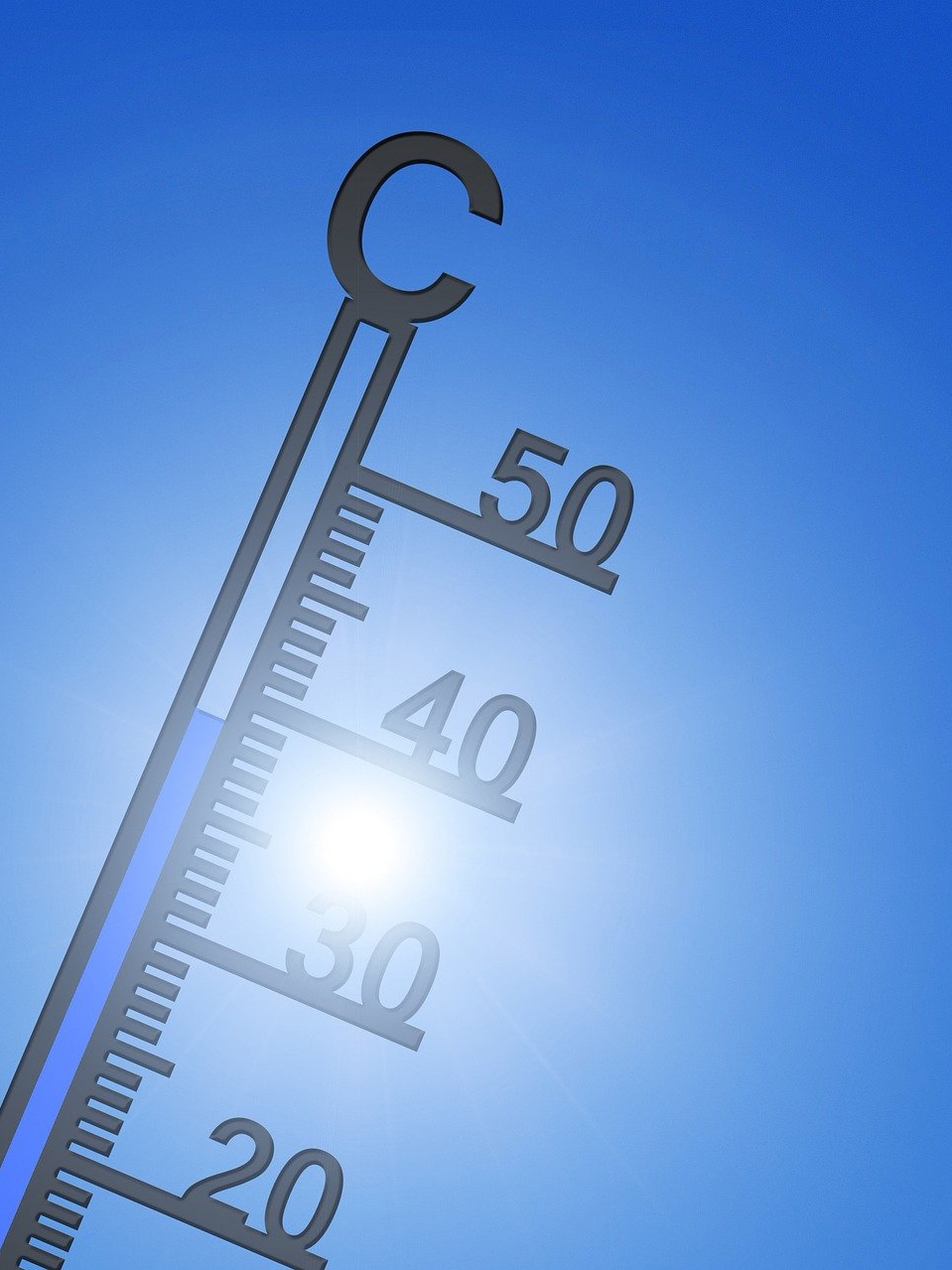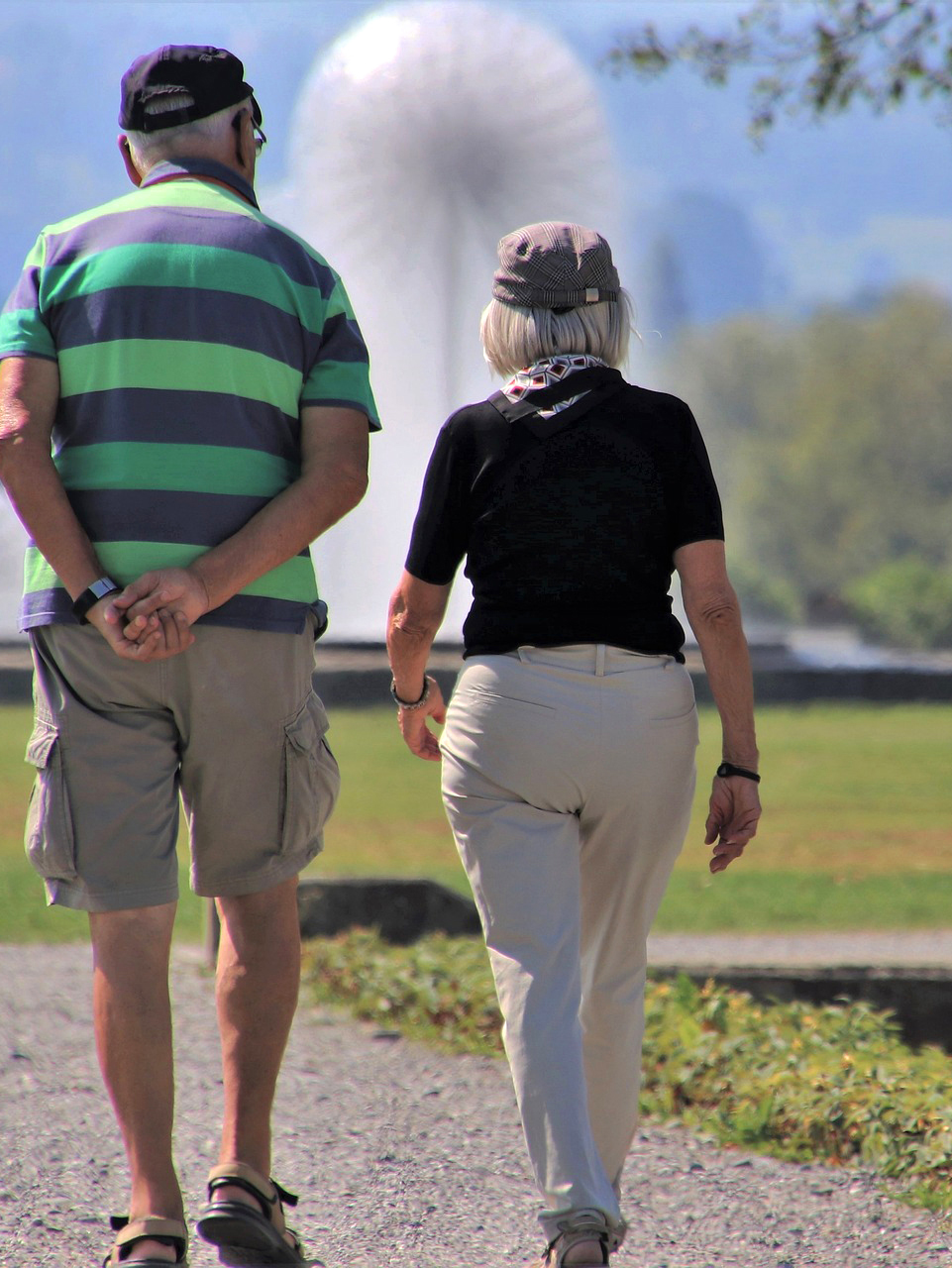Keep moving: How to avoid circulatory disorders and their consequences in an ever-heating climate
The climate crisis has been shown to lead to increased periods of heat, which in many countries are encountering an increasingly aging population. With age, it becomes more difficult for the body to adapt to heat and the likelihood of underlying diseases such as chronic venous insufficiency or peripheral artery disease increases. This in turn is associated with a higher risk of developing chronic wounds. This situation is challenging because it is very complex. Above all, however, it requires one thing – to get going, both figuratively and literally: regular physical exercise makes a decisive contribution to preventing vascular diseases, obesity and diabetes mellitus. This not only makes it easier to respond to heat stress, but also reduces the likelihood of chronic wounds.
This blog article is part two of our series on the impact of the climate crisis on chronic wounds. In this text we focus on circulatory disorders and their consequences for skin and tissue in connection with old age and increased heat stress. At the same time, we will address approaches that can help prevent vascular diseases or alleviate their symptoms.
First of all: The vascular system as key point
The blood, which circulates through our vessels, supplies the organs with nutrients and oxygen and removes metabolic products and carbon dioxide. It thus fulfills essential tasks in the human body and also helps to keep the body core temperature constant. If the temperature in an area rises, the blood vessels expand and blood flow increases. This improves heat exchange and the body can cool down. In order for the blood flow in the system to be guaranteed and blood circulation to function well, it is crucial to provide your body with enough water, especially on hot days. This is often a challenge in everyday life, especially for older people.
In addition, blood circulation deteriorates with age. This makes it harder for the body to respond to heat. Wound healing in the skin is also negatively affected when blood circulation decreases. Injured or damaged skin can only regenerate properly if it is adequately cared for, i.e. has sufficient blood circulation.
What disturbs the blood circulation I: Blocked arteries
Arteriosclerosis is a disease that has a significant impact on blood flow. Deposits within an artery harden and limit the blood flow. If the vessels can only insufficiently supply the tissue with nutrients and oxygen, arteriosclerosis triggers peripheral artery disease (PAD). The metabolism of cells in the affected tissue suffers massively, and the tissue can even die as a result. PAD is therefore one of the most common causes of chronic wounds. The risk of this disease increases with age. Smokers and people with diabetes mellitus, high blood pressure or high cholesterol levels are also particularly at risk of arteriosclerotic deposits and those deposits developing into PAD.
Counteracting circulatory problems I: Healthy lifestyle, functional arteries
Sufficient physical activity and a low-fat and low-cholesterol diet, as well as avoiding cigarettes and alcohol can help prevent arteriosclerosis. At a later stage, when arteriosclerosis or PAD have already formed, physical activity can be used therapeutically. Walking training and gymnastic exercises supplement medicinal measures significantly. They have a positive effect on the cardiovascular system, improve or maintain mobility and thus increase the quality of life. When it is hot, the regular exercise program should be scheduled during the morning hours and special care should be taken not to overexert yourself and to drink enough water.
What disturbs the blood circulation II: Overstrained veins
If the veins cannot fulfill their function adequately, they become permanently overloaded and more fluid and metabolites remain in our feet and lower limbs. This affects blood circulation and can lead to swelling and edema. If no therapeutic measures are taken, the skin becomes inflamed and weeping and itchy eczema can develop. They, in turn, can develop into ulcers and ultimately become chronic sores.
But what causes the capacities of the veins to be overused? A central reason for this are venous valves that do not close completely. These protuberances in the vessel walls prevent the blood from flowing back into the vein. In this way, they support the vascular system in transporting the blood towards the heart, against gravity. Unlike the arteries, in which the blood flow is propelled by the pumping of the heart, the veins have to do their job without such a pulse generator and are dependent on the muscle pump working adequately. This is activated by the movement of the legs and feet. If the valve effect of the vein valves is restricted because they do not close properly, the pressure in the vessels increases and the vein walls expand over time. This can result in varicose veins. The condition is widespread within the population. The risk of varicose veins results on the one hand from a hereditary predisposition, on the other hand it increases with age. Women are more likely to be affected by varicose veins, as are overweight people and people who do not practice physical activity.
A varicose vein and with it the increased pressure in the veins can trigger chronic venous insufficiency (CVI). In turn, the disease intensifies this overload phenomenon. Heart failure can also lead to the development of chronic venous insufficiency. Along with PAD, CVI is one of the most common causes of chronic wounds.
Counteracting circulation problems II: Trained muscle pump, relieved veins
As with PAD, regular exercise plays a key role in supporting vein function and keeping the veins healthy and efficient. An active muscle pump and thus well-trained foot and leg muscles relieve the blood vessels, especially if they are weakened due to various factors (e.g. age, genetic disposition). It is also beneficial to watch your weight and to use shoes that are flat and comfortable in everyday life.
When the blood vessels dilate at high ambient temperatures and the blood flow increases to cool the body, this puts an additional challenge on the vascular system and thus the veins. People with varicose veins should therefore avoid heat and direct sunlight as much as possible. Compression therapy is often used to treat varicose veins. The pressure exerted on the limb from the outside promotes blood flow in the veins towards the heart. Wearing compression stockings can be particularly uncomfortable on hot days. Nevertheless, those affected should try to implement this therapeutic measure consistently, because only then the compression can work effectively.
Next steps: Part three of our series will be on the lymphatic system, edema and ulcers, and the importance of compression therapy
When it’s hot, it’s not just the blood circulation that is particularly challenged, but also the lymphatic system. Dead cells, bacteria or metabolic end products are drained off in the lymph vessels. If the pressure in these vessels increases, more fluid can accumulate in the tissue and edema develop. Skin and tissue can suffer as a result and chronic wounds may follow. Which factors are particularly relevant for the development of edema and ulcers and what we can do to contribute to the success of compression treatment – we will deal with this in the third part of this blog series
(Text: Edeltraud Günthör & Conny Schneider, 04.07.2023)
Sources
Australian Wound Management Association and New Zealand Wound Care Society. Australian and New Zealand Clinical Practice Guideline for Prevention and Management of Venous Leg Ulcers (2011); [online, abgerufen am 6. März 2023]. Verfügbar unter: https://www.nzwcs.org.nz/images/luag/2011_awma_vlug.pdf.
Gesund.bund.de. Chronische Wunden. Bundesministerium für Gesundheit [online]; 28. August 2020 [abgerufen am 13. März 2023]. Verfügbar unter: https://gesund.bund.de/chronische-wunden.
Klinikum rechts der Isar/Klinik und Poliklinik für Vaskuläre und Endovaskuläre Chirurgie. Varikosis, Venenthrombose, Postthrombotisches Syndrom [Informationsbroschüre für Patient:innen] (2018); [online, abgerufen am 13. März 2023]. Verfügbar unter: https://www.vascular.mri.tum.de/wp-content/uploads/2018/01/Broschuere_Venen_CMYK_DRUCK_FINAL_komprimiert.pdf.
Gesundheitsinformation.de. Den Blutdruck ohne Medikamente senken. Institut für Qualität und Wirtschaftlichkeit im Gesundheitswesen (IQWiG) [online]; 8. Mai 2019 [abgerufen am 7. März 2023]. Verfügbar unter: https://www.gesundheitsinformation.de/den-blutdruck-ohne-medikamente-senken.html#:~:text=K%C3%B6rperliche%20Bewegung%20und%20Sport%20erh%C3%B6hen,Blutgef%C3%A4%C3%9Fe%20und%20macht%20sie%20elastischer.&text=dreimal%20in%20der%20Woche%20eine%20Stunde%20locker%20joggten.
Phlebology.de. Krankheitsbilder: Krampfadern. Deutsche Gesellschaft für Phlebologie [online, abgerufen am 12. März 2023]. Verfügbar unter: https://www.phlebology.de/patienten/venenkrankheiten/krampfadern/.
Gesundheit.gv.at. Postthrombotisches Syndrom. Bundesministerium für Soziales, Gesundheit, Pflege und Konsumentenschutz (BMSGPK) [online]; 20. Oktober 2018 [abgerufen am 14. März 2023]. Verfügbar unter: https://www.gesundheit.gv.at/krankheiten/herz-kreislauf/venen/chronisch-venoese-insuffizienz.html.
Awmf.org. S2k – Leitlinie Diagnostik und Therapie der Varikose. Arbeitsgemeinschaft der Wissenschaftlichen Medizinischen Fachgesellschaften (AWMF) [online]; März 2019 [abgerufen am 14. März 2023]. Verfügbar unter: https://www.awmf.org/uploads/tx_szleitlinien/037-018l_S2k_Varikose_Diagnostik-Therapie_2019-07.pdf.
Internisten im Netz. Gesundheitsgefahren bei Hitze. Berufsverband deutscher Internistinnen und Internisten [online]; 11. Juli 2010 [abgerufen am 14. März 2023]. Verfügbar unter: https://www.internisten-im-netz.de/aktuelle-meldungen/aktuell/gesundheitsgefahren-bei-hitze.html.
Olivieri B, Yates TE, Vianna S, Adenikinju O, Beasley RE, Houseworth J. On the Cutting Edge: Wound Care for the Endovascular Specialist. Semin Intervent Radiol. 2018 Dec;35(5):406-426. doi: 10.1055/s-0038-1676342. Epub 2019 Feb 5. PMID: 30728657; PMCID: PMC6363558. (Link: https://www.ncbi.nlm.nih.gov/pmc/articles/PMC6363558/)
Gesundheit.gv.at. Venenerkrankungen: Was kann ich selbst tun? Bundesministerium für Soziales, Gesundheit, Pflege und Konsumentenschutz (BMSGPK) [online]; 20. Oktober 2018 [abgerufen am 12. März 2023]. Verfügbar unter: https://www.gesundheit.gv.at/krankheiten/herz-kreislauf/venen/venenerkrankungen-was-kann-ich-selbst-tun.html.
Lawall H, Huppert P, Espinola-Klein C, Rümenapf G: Clinical practice guideline: The diagnosis and treatment of peripheral arterial vascular disease. Dtsch Arztebl Int 2016; 113: 729–36. DOI: 10.3238/arztebl.2016.0729. (Link: https://www.aerzteblatt.de/archiv/183108/Diagnostik-und-Therapie-der-peripheren-arteriellen-Verschlusskrankheit)
Gesund.bund.de. Hitze: Ältere und pflegebedürftige Menschen schützen. Bundesministerium für Gesundheit [online]; 2. Juli 2021 [abgerufen am 13. März 2023]. Verfügbar unter: https://gesund.bund.de/hitze-pflegebeduerftigkeit.

